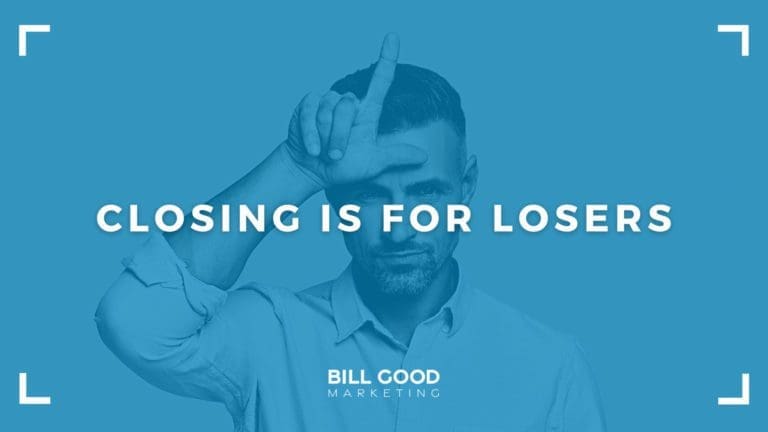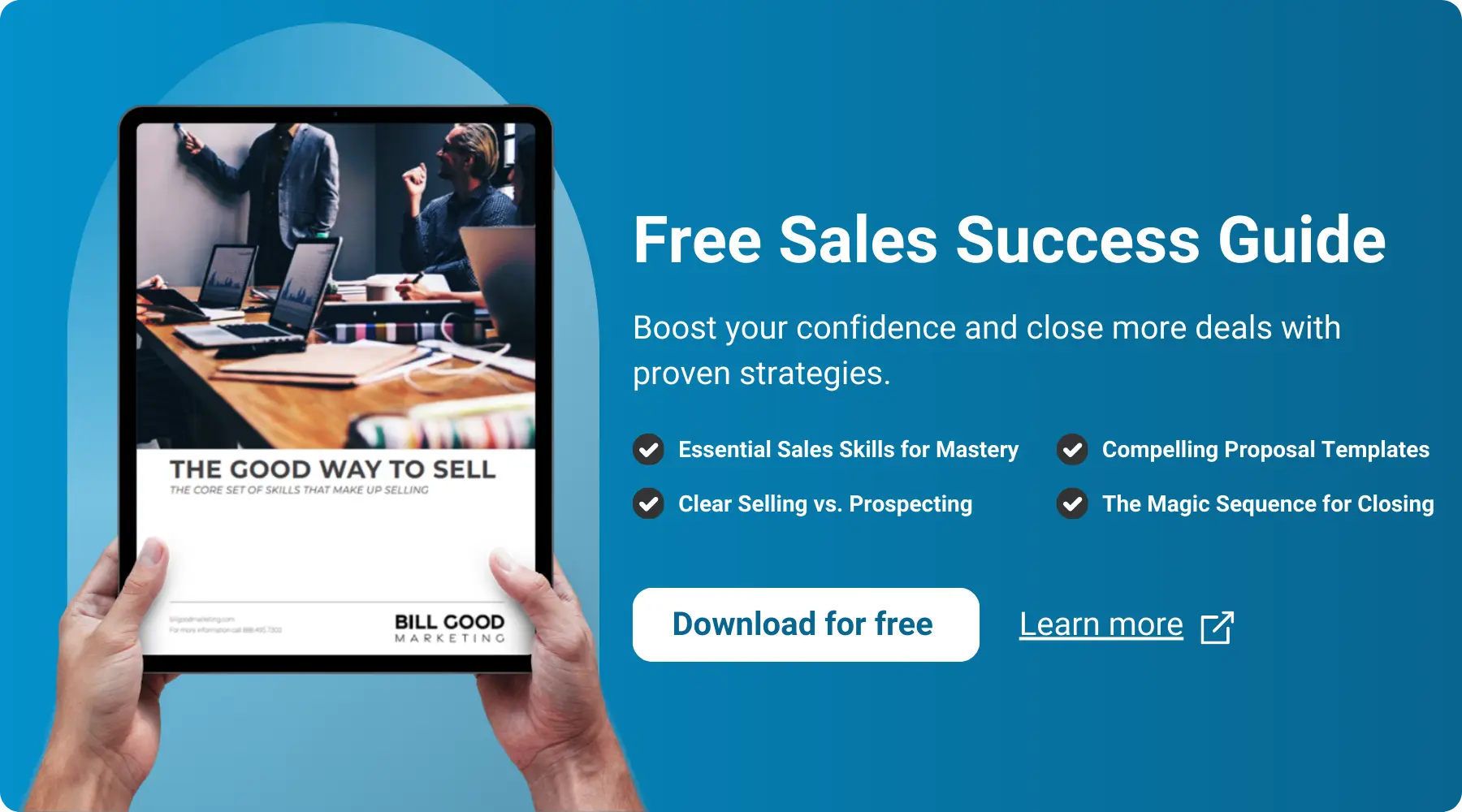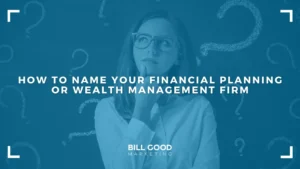The original version of this story was published in Research Magazine® in 1996 (now ThinkAdvisor®). This article has been updated for the year 2023.
Years ago, I was a devotee of J. Douglas Edwards, the great sales trainer of the ’40s and ’50s, who believed that closing was the highest form of sales technique. One of Edwards’ tapes presented 22 ways to close the sale, and I memorized most of them.
However, I now believe that closing techniques are, at best, overrated and have very limited uses. At worst, they are downright harmful: Misused, closing may result in fewer sales, not more.
What Is a Close?
Edwards and his disciples–Tommy Hopkins, for one–taught that “A close is any question the answer to which indicates the customer has bought.”
For example, “Did you want 5,000 shares, or would you prefer a stronger position?” is a classic forced choice close, in which you, the macho–or macha–salesperson, force the cowering prospect to choose between something you want to sell (5,000 shares) and something else you want to sell (a whole lot more than 5,000 shares).
“Did you want the income monthly, quarterly, or semi-annually?” is a Secondary-Question Close. The ever-manipulative salesperson tricks the ever-resistant client into a purchase by forcing a choice on some secondary issue. As soon as the prospect chooses, the sale is a done deal.
A variation is the Assumptive Tie-down, such as “You would prefer the income monthly, wouldn’t you?” in which the all-powerful sales professional rolls the still-objecting prospect right into a commitment.
Slick, right? Right! In fact, too slick–*way* too slick!
What’s Wrong with This Picture?
No one likes being sold, and being closed is the essence of being sold. By-the-book hard closes, at best, annoy prospects and more likely offend them.
I quit closing good prospects a long time ago. Moreover, I’ve discussed the subject with many of the top financial advisors I know, and they would no more close a sale than chop off a body part. I conclude that closing doesn’t work anymore–at least not as taught by the old-school practitioners. In fact, the better your traditional closing skills, the fewer sales you will get.
How’s that for irony?–perfect your closing skills and starve!
Can I prove this heretical assertion? I think I can. Jot down the names of your newest 10 to 20 clients. Beside each name, write down a word: ‘Sold’ if you made a sale before establishing a relationship, ‘bought’ if you established the relationship first and then the client bought.
I’m betting you’ll find a preponderance of ‘boughts,’ whom you never needed to close.
The New Law of Closing the Sale
Edwards said: “Half your sales will be made after the prospect has said ‘No’ six times.” Good says: “Virtually all of your sales will be made before the prospect has said ‘No’ once.”
The new law I’m promulgating is: *Don’t close anyone who is likely to buy!* Focus on the process–developing the relationship, educating the prospect, and encouraging the prospect–not on closing.
If you have educated and enlightened your prospects, you have created value in their minds. If you also have a good relationship, you don’t need to close. You just make the right recommendation, then sit back and let the prospect buy.
Before continuing, let me offer a new definition of “close”: “A close is a question that ends a selling process.”
If the sale is moving, you don’t want to end it. The prospect might buy, so you don’t close.
But What If the Selling Cycle Bogs Down?
However, with many prospects, the selling cycle eventually hits a snag. That’s the danger point, where many FAs lose the game–especially new ones. Rookies tend not to close the people who are unlikely to buy for fear of scaring them off. They tend to close the ones who are progressing.
They wind up talking to non-buyers and alienating those who might do business with them.
Today, clients buy, but they don’t get sold. If you attempt one or more hard closes, you may luck out and get an immediate sale; but if not, you’re likely to find your prospect is permanently “temporarily unavailable.”

Closes for Non-Buyers
Granted, many prospects seem to have great difficulty making up their minds. Or they’ve decided against buying, but they hate to tell you “No.” In either case, they continue to talk, sometimes with apparent great interest.
With these people, terminating the selling cycle is an act of mercy–to you and them.
You can say, for instance, “It sounds to me like you’ve already decided, in the back of your mind, not to go ahead with doing a plan; is that correct?” We’ll call this the Off-the-Hook Assumptive Tie-down.
Here’s the CD-Alternative Close: “Given the difficulty you’re having in making up your mind on this, my guess is that you’d be a whole lot happier just leaving your money parked in a CD–don’t you agree?”
The Bye-Bye Close–used to counter the Won’t Return My Calls and Hides in the Bathroom When I Visit Objection–consists of a very short letter, something like:
Dear Effie:
Given the difficulty I’ve had catching up with you, I’m just dropping you a note to say how much I’ve enjoyed getting to know you. If you ever require my services in the future, I’ll be more than happy to do my best for you.
I’m enclosing a business card for your convenience.
So that’s what I mean, in the title of this article, by “closing is for losers”: *Reserve* closing for those prospects who are unlikely to buy.
Use your hard closes only to shove the apparent losers out of the nest. If an occasional fledgling flies, hurray! But most of the time, they’ll crash to earth, and that’s fine.
When Closing Can Make a Sale
Sometimes, when a prospect is on the fence, the lightest possible nudge will land them at your feet. But it has to be delivered with a feather touch.
For such a Very Gentle Close, just say, “Shall we go ahead?”
But no force! Not with good prospects.





